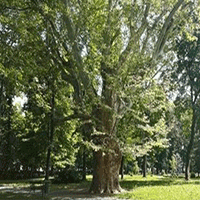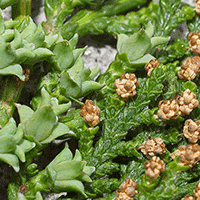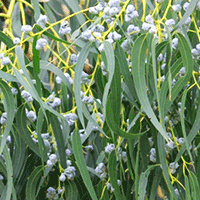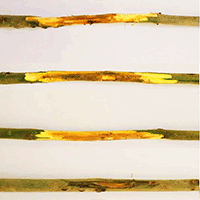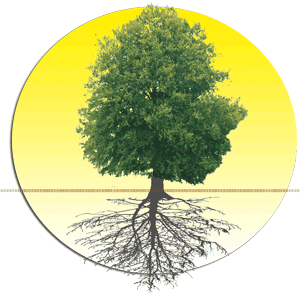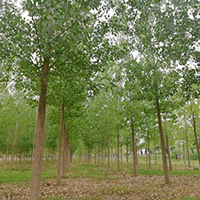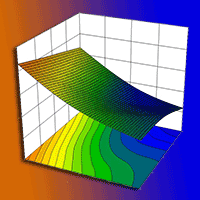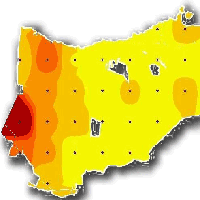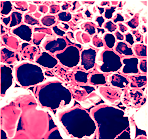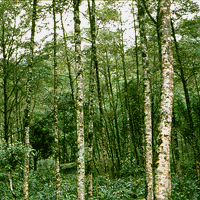
Heavy metal accumulation characteristics of Nepalese alder (Alnus nepalensis) growing in a lead-zinc spoil heap, Yunnan, south-western China
Yuebo Jing (1-2), Hongliang Cui (1), Tao Li (1), Zhiwei Zhao (1)
iForest - Biogeosciences and Forestry, Volume 7, Issue 4, Pages 204-208 (2014)
doi: https://doi.org/10.3832/ifor1082-007
Published: Feb 27, 2014 - Copyright © 2014 SISEF
Research Articles
Abstract
A fast-growing alder species native to the eastern Himalayas, Nepalese alder (Alnus nepalensis), has recently received considerable attention in the restoration of contaminated lands due to its significant economic benefits and ecological functions. The bioaccumulation characteristics and phytoremediation potential of naturally regenerated Nepalese alder were evaluated in a lead-zinc spoil heap located in Lancang county, Yunnan province, south-western China. Results showed that bioaccumulation factors (BFs) of A. nepalensis for Zn and Pb were always >1 in slightly contaminated soils (extractable Zn, Pb of 4.2-17.9 and 3.4-13.1 mg kg-1, respectively) and >1 for Cd in contaminated soils (extractable Cd 0.3- 6.8 mg kg-1). By contrast, translocation factors (TFs) for Zn were <1 in all sampling plots, but >1 for Pb in soil slightly contaminated by 13.1 mg kg-1 extractable Pb and >1 for Cd in contaminated soils (extractable Cd 2.6- 6.8 mg kg-1). Significant positive correlations were found between heavy metals (HMs) in roots and extractable HMs in soils (p<0.01) and between HMs in shoots and extractable HMs in soils (p<0.05) except for Cd. Based on the accumulation capacity revealed in this study, we suggest that A.nepalensis is a promising tree species for phytostabilization of zinc and lead in soils slightly contaminated with Zn and Pb and for phytoextraction of cadmium in Cd-polluted soil.
Keywords
Phytoremediation, Nepalese Alder, Alnus nepalensis, Metal Contamination, Bioaccumulation Factor, Translocation Factor
Authors’ Info
Authors’ address
Hongliang Cui
Tao Li
Zhiwei Zhao
Laboratory of Conservation and Utilization for Bioresources and Key Laboratory of Microbial Diversity in Southwest China, Ministry of Education, Yunnan University, Kunming, 650091 Yunnan (China)
Yunnan Academy of Forestry, Kunming, 650201 Yunnan (China)
Corresponding author
Paper Info
Citation
Jing Y, Cui H, Li T, Zhao Z (2014). Heavy metal accumulation characteristics of Nepalese alder (Alnus nepalensis) growing in a lead-zinc spoil heap, Yunnan, south-western China. iForest 7: 204-208. - doi: 10.3832/ifor1082-007
Academic Editor
Elena Paoletti
Paper history
Received: Jul 20, 2013
Accepted: Nov 20, 2013
First online: Feb 27, 2014
Publication Date: Aug 01, 2014
Publication Time: 3.30 months
Copyright Information
© SISEF - The Italian Society of Silviculture and Forest Ecology 2014
Open Access
This article is distributed under the terms of the Creative Commons Attribution-Non Commercial 4.0 International (https://creativecommons.org/licenses/by-nc/4.0/), which permits unrestricted use, distribution, and reproduction in any medium, provided you give appropriate credit to the original author(s) and the source, provide a link to the Creative Commons license, and indicate if changes were made.
Web Metrics
Breakdown by View Type
Article Usage
Total Article Views: 60714
(from publication date up to now)
Breakdown by View Type
HTML Page Views: 50446
Abstract Page Views: 3661
PDF Downloads: 5187
Citation/Reference Downloads: 32
XML Downloads: 1388
Web Metrics
Days since publication: 4324
Overall contacts: 60714
Avg. contacts per week: 98.29
Citation Metrics
Article Citations
Article citations are based on data periodically collected from the Clarivate Web of Science web site
(last update: Mar 2025)
Total number of cites (since 2014): 11
Average cites per year: 0.92
Publication Metrics
by Dimensions ©
Articles citing this article
List of the papers citing this article based on CrossRef Cited-by.
References
Official methods of analysis of the Association of Official Analytical Chemists (14th edn). AOAC, Washington, DC, USA, pp. 344.
Gscholar
Structural characteristics of LaoChang Ag-Pb orefield in LanCang, Yunnan. The Chinese Journal of Nonferrous Metals 7: 1-5.
Gscholar
Phytoremediation potential of native plants growing on a heavy metals contaminated soil of copper mine in Iran. World Academy of Science, Engineering and Technology 53: 377-382.
Gscholar
Soil quality-determination of copper, zinc-flame atomic absorption spectrophotometry. Report GB/T 17138, State Environmental Protection Administration of China, Beijing, China.
Gscholar

